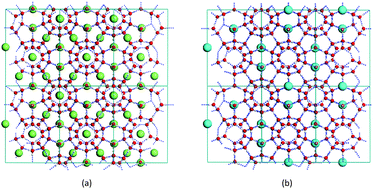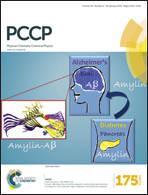Phase diagrams for clathrate hydrates of methane, ethane, and propane from first-principles thermodynamics
Abstract
Natural gas hydrates are inclusion compounds composed of major light hydrocarbon gaseous molecules (CH4, C2H6, and C3H8) and a water clathrate framework. Understanding the phase stability and formation conditions of natural gas hydrates is crucial for their future exploitation and applications and requires an accurate description of intermolecular interactions. Previous ab initio calculations on gas hydrates were mainly limited by the cluster models, whereas the phase diagram and equilibrium conditions of hydrate formation were usually investigated using the thermodynamic models or empirical molecular simulations. For the first time, we construct the chemical potential phase diagrams of type II clathrate hydrates encapsulated with methane/ethane/propane guest molecules using first-principles thermodynamics. We find that the partially occupied structures (136H2O·1CH4, 136H2O·16CH4, 136H2O·20CH4, 136H2O·1C2H6, and 136H2O·1C3H8) and fully occupied structures (136H2O·24CH4, 136H2O·8C2H6, and 136H2O·8C3H8) are thermodynamically favorable under given pressure–temperature (p–T) conditions. The theoretically predicted equilibrium pressures for pure CH4, C2H6 and C3H8 hydrates at the phase transition point are consistent with the experimental data. These results provide valuable guidance for establishing the relationship between the accurate description of intermolecular noncovalent interactions and the p–T equilibrium conditions of clathrate hydrates and other molecular crystals.


 Please wait while we load your content...
Please wait while we load your content...